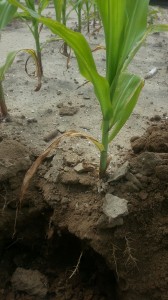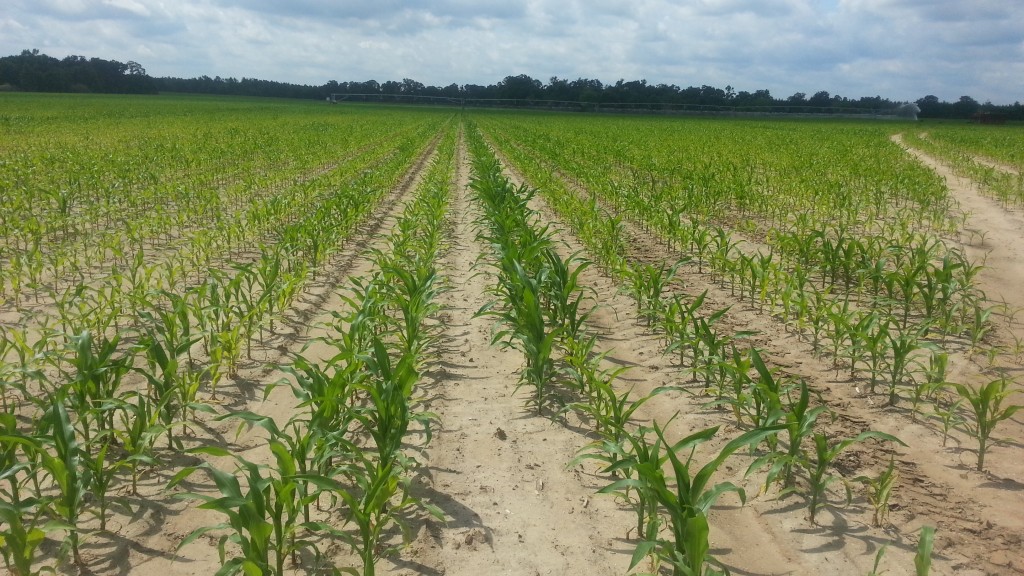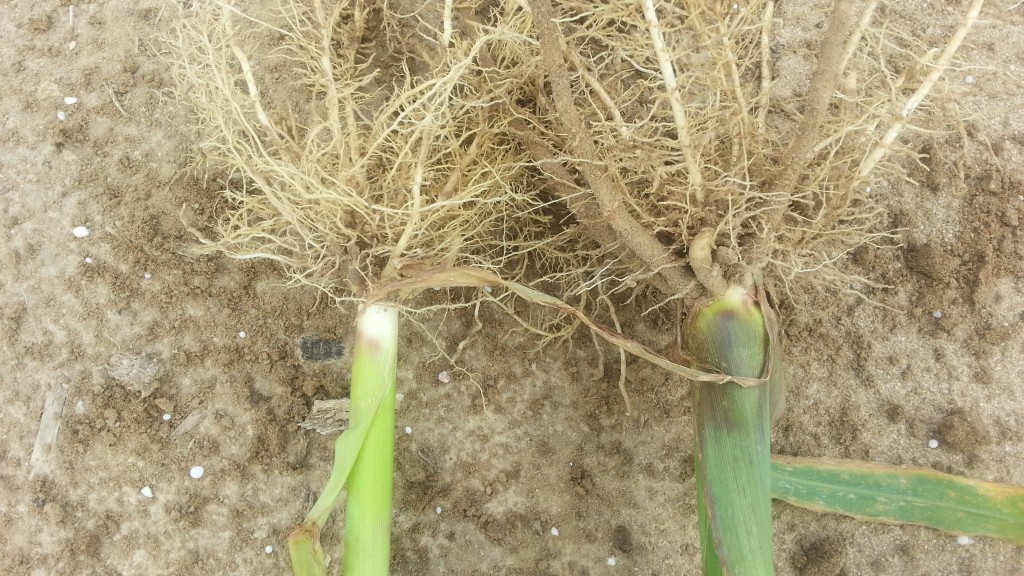Lingering cool springtime temperatures have been a pleasure for farmers and fieldworkers, but some local corn fields have not fared as well. Below are a few photos from an irrigated field in the western panhandle which had as much attention a corn field could get.
The producer based his pre-plant fertilizer application on soil test recommendations. Generally, he uses a starter fertilizer, but this year he employed another commercially available product. Dr. David Wright concluded the corn was off to a slow start because the fertilizer was not readily available for corn already having a difficult time in cool, damp ground.
Dr. Wright suggested next year returning to the practice of using a starter fertilizer, but to have faith in this year’s corn. He predicts it will develop normally with continued proper care.
So what is starter fertilizer?  Small amounts of nitrogen, phosphorus, sulfur, and micronutrients are often used as a starter fertilizer. The main advantage of starter fertilizer is better early-season growth, earlier dry down, and with many hybrids, higher yield. Corn planted in February, March, or early April is exposed to cool soil temperatures, which may reduce phosphate uptake.
Small amounts of nitrogen, phosphorus, sulfur, and micronutrients are often used as a starter fertilizer. The main advantage of starter fertilizer is better early-season growth, earlier dry down, and with many hybrids, higher yield. Corn planted in February, March, or early April is exposed to cool soil temperatures, which may reduce phosphate uptake.
Banding a starter fertilizer two inches to the side and two inches below the seed increases the chances of roots penetrating the fertilizer band and taking up needed nitrogen and phosphorus. Starter fertilizer can also be used in a surface dribble for strip-till planting with the solution applied two inches to the side of the seed furrow for each 20 pounds of nitrogen used.
Currently, the most popular starter fertilizer is ammonium polyphosphate (10-34-0), a liquid. Monoammonium and diammonium phosphates are dry sources and equally effective. There is generally no advantage in using a complete fertilizer (NPK) as a starter, since applying nitrogen and phosphorus is the key to early growth. If soil test levels for P and K are high, a starter with 30 to 40 pounds per acre of nitrogen and 15 pounds per acre of P is adequate for starter application.
Normally, 10 to 15 gallons of a starter fertilizer containing one-third to one-half 10-34-0 and the remainder as 28-0-5 has been effective for early corn growth. Corn will take up around 15 to 20 pounds per acre of N and 5 pounds per acre of P by the time the corn is 15 inches tall. Therefore, high rates of starter P are not necessary unless it is used to supply all of the P for the corn crop in a field requiring the nutrient.
Please see the complete Field Corn Production Guide for more information on fertilization, pest control, and overall management of field corn. The information on pre-plant fertilizer was taken from the EDIS publication, Field Corn Production Guide, written by Drs. David Wright, Jim Marois, Jim Rich, and Richard Sprenkel.


